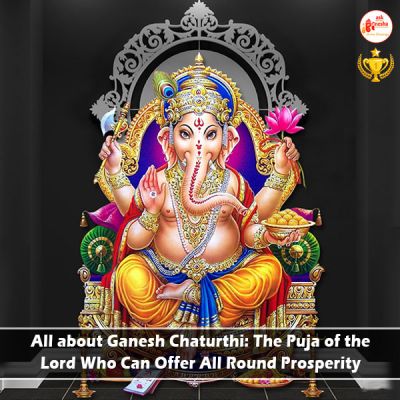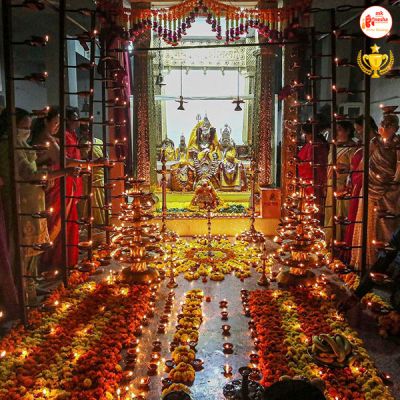Celebrated during the Bhadrapada month of the Hindu calendar, Ganesh Chaturthi is one of the most awaited festivals in India. Also known as “Vinayaka Chaturthi” or “Ganeshotsav”, this festival marks the birth of Lord Ganesha- the generous god who takes away all the obstacles from his devotee’s life. The religious celebration lasts for 10 days and is held once every year. In this article, we will talk about everything you need to know about the celebration, including the Ganesh Chaturthi 2024 date, time, history, significance, and entire puja vidhi to worship the divine lord.
When is Ganesh Chaturthi in 2024?
It is believed that Lord Ganesha was born on the Chaturthi tithi of the Shukla Paksha in the Bhadrapada (Badho) month. As per the Panchang, it usually corresponds to the months of August or September of the Gregorian calendar. In 2024, Ganesh Chaturthi falls on September 7, which is a Saturday. As it is a 10-day festival, devotees will make their best efforts to honor and worship the lord and bid a respectful goodbye to his divine presence on 17th September 2024.
Ganesh Chaturthi 2024: Time and Puja Muhurat for Vinayaka Chaturthi
The best Ganesha Puja Muhurat to appease Lord Ganesha falls during the Madhyanha hour- a time which is considered highly auspicious to reach the divine. It is also the time when Lord Ganesha was created by Goddess Maa Parvati.
In 2024, the Madhyanha Puja Muhurat will begin at 11:03 am and last until 01:34 pm, spanning 2 hrs and 30 minutes. The best Muhurat for Ganesh Visarjan is at 05:37 pm on the 17th of September, 2024.
Significance of Ganesh Chaturthi: Why is Ganesh Chaturthi celebrated?
Ganesh Chaturthi celebrates the birth of Lord Ganesha, the elephant-headed deity known as the remover of obstacles and the god of wisdom, prosperity, and new beginnings. Throughout India, especially in Mumbai (previously known as Bombay), grand idols of Lord Ganesha are installed with great enthusiasm. The joy of setting up these idols is matched by the sorrow of immersing them, but this sorrow is transient. The belief that Lord Ganesha will return next year brings hope and optimism to his devotees.
This cycle of installation and immersion teaches us the essence of "change" and “transformation”. The festival reminds us that today's challenges are temporary and that better times will follow. It emphasizes that even the worst of times will pass, making way for renewed hope and a better future.
Historical Origin of Ganesh Chaturthi: How it became a prominent festival?
According to ancient Hindu scriptures, Lord Ganesha was brought to life by the powerful Goddess Parvati who created him with the clay applied to her body. Revered as the foremost deity, he is worshiped at the beginning of every puja, establishing his supreme role amongst the gods. In the 17th century, Ganesh Chaturthi was transformed from a puja to an impressive community celebration by the great Maratha ruler Chhatrapati Shivaji. Shivaji saw the festival as a means to foster unity and nationalism in his empire.
During the British Raj, history repeated itself when Lokmanya Tilak, the brave freedom fighter, made Ganesha's birthday a household event to bring communities together and strengthen the desire for independence. Since then, Ganesh Chaturthi has become a symbol of communal harmony, devotion, and cultural pride.
Ganesh Chaturthi Puja Vidhi and Rituals: How to worship Lord Ganesh?
The Ganesh Chaturthi Puja Vidhi involves several key steps to ensure a proper and auspicious worship of Lord Ganesha. Make Bappa happy by following the mentioned steps:
1. Preparation: Thoroughly clean the worship area before beginning the Puja. After cleaning, sprinkle some Ganga jal to remove any negative energy.
2. Murti Sthapana: Position the Ganesha idol or image on a clean platform or temple. Adorn the idol with flowers, garlands, and a clean cloth.
3. Ganesha Pradakshina (Welcoming the Deity): Welcome Bappa by lighting a ghee lamp and incense sticks. Gently sprinkle Gangaajal around the idol to purify the space.
4. Puja Rituals:
Abhishekam (Bathing): Gently bathe the idol with water, milk, and honey. Once done, dress him with new clothes.
Avahanam (Welcoming): Invite Lord Ganesha to reside in the idol.
5. Offer Prayers and food: You can recite these mantras to attain his blessings -
- “Om Gan Ganapataye Namah”
- “Om Vakratunda Mahakaya Suryakoti Samaprabha, Nirvighnam Kurume Deva Sarva Karyeshu Sarvada”
Offer fruits, and traditional delicacies like kheer and puri. And yes, don't forget the Laddoos!
6. Aarti: The positive energy during God Ganesha's Aarti amplifies when the entire family participates together. Once the aarti is done, seek Bappa’s blessings.
7. Wrapping up the Puja: At the end of the puja, make three rounds around the Ganesha’s idol or image, if possible. Finally, eat the prasad by distributing it amongst family, friends, and neighbors.
8. Ganpati Visarjan: On the final day of the festival, perform the idol’s Visarjan with great pomp and grandeur, symbolizing Ganesha's return to his celestial abode.
Remember, Lord Ganesha will come back again next year but his blessings will stay with you the entire time. Hence, make sure to honor him with devotion and respect.



























 Translate
Translate